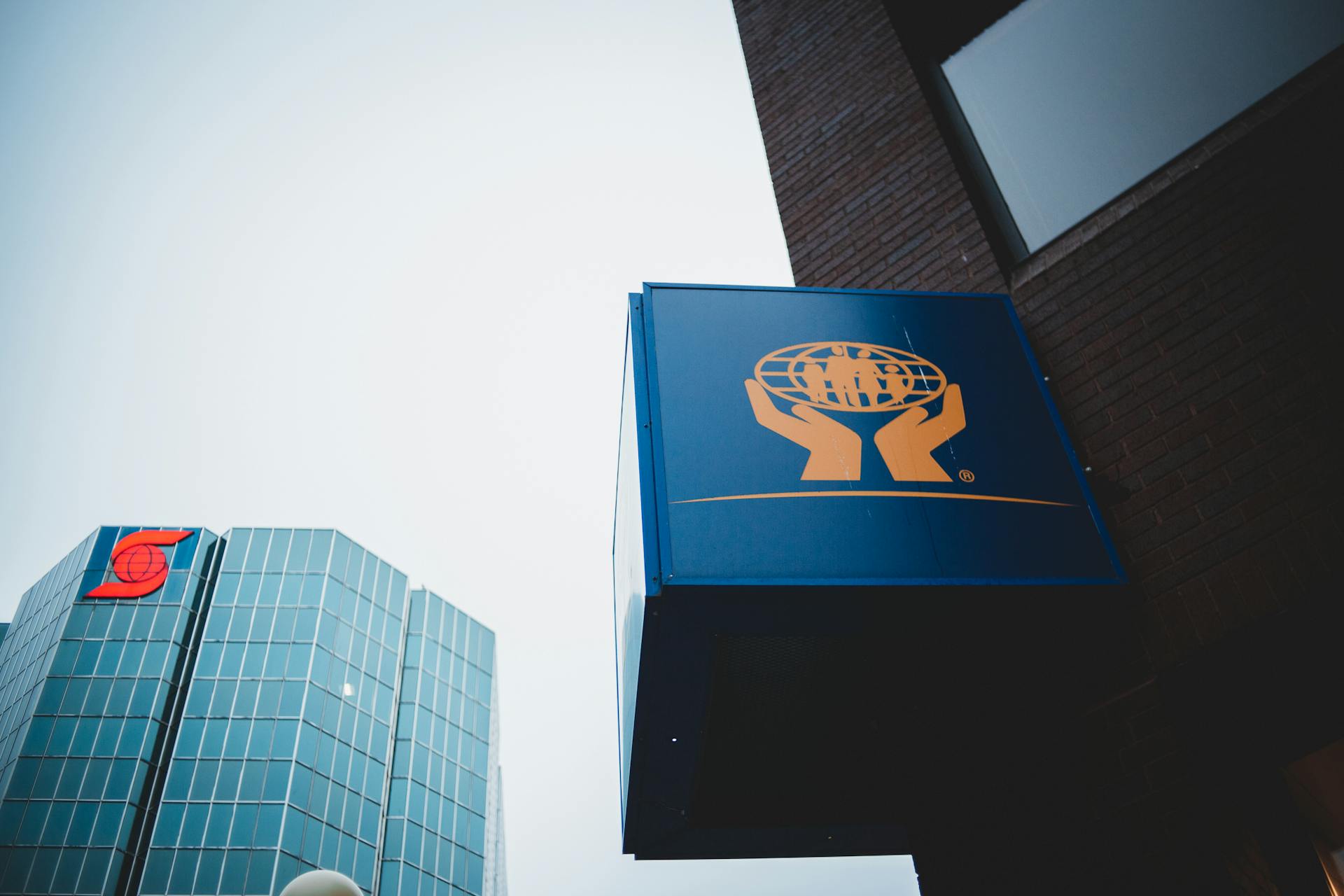
So, you're considering funding for your startup, and you're not sure where to start. Pre seed and seed funding are two common options, but they have distinct differences.
Pre seed funding is typically used for product development and market research, and it's usually provided by angel investors or family and friends. This type of funding is usually smaller, ranging from $20,000 to $500,000.
With pre seed funding, you'll have more control over your business, but you'll also have to be more hands-on, as you'll be doing a lot of the legwork yourself. This can be a great option if you have a solid business plan and a clear vision for your product.
Seed funding, on the other hand, is used for scaling your business and taking it to the next level. It's usually provided by venture capitalists or seed investors, and it can range from $500,000 to $2 million.
Understanding Startup Stages
Startups engage in new funding rounds to raise money each time they bring on investors, as they try to get things moving and reach profitability.
To determine which stage your startup is in, you need to understand the different stages of funding. Pre-seed and seed funding are two essential financing rounds that startups go through.
Pre-seed funding is the first level of funding, preceding the seed stage and subsequent phases. During this period, investors offer funds to entrepreneurs in exchange for an equity stake to kickstart product development.
Here's a brief overview of the typical milestones that could show you're prepared for pre-seed funding:
- Having a prototype or minimum viable product (MVP)
- Displaying some traction, including early adopters and feedback indicating product demand
- Having a compelling business model
To determine if you're ready for pre-seed funding, consider the following:
- Market fit: You've found a hole in your desired market for your product to fill.
- Team readiness: The experience within your leadership team is enough to show investors you can accomplish growth milestones.
- Prototyping: You have the framework; now, you need the funding to start prototyping to find the best fit.
- MVP development: An MVP bridges the gap between you and potential customers, allowing you to test demand and gain insight into pros and cons.
Here's a comparison of the pre-seed and seed stages:
The seed stage is the first formal round of funding for a startup, where the product or service has attracted enough interest to draw bigger, accredited investors.
Capital
Capital is a crucial aspect of a startup's lifecycle, and it's essential to understand the difference between pre-seed and seed capital. Pre-seed capital usually comes from the startup founder, close friends, family members, or supporters, and helps the startup get off the ground and achieve liftoff.
The average pre-seed funding amount is approximately $500,000 or less, according to a DocSend report analyzing 174 startups in the pre-seed stage. This amount can vary significantly depending on the nature of the startup or the type of service or products it plans to offer.
Securing capital is a formidable challenge, even for firms boasting healthy profit margins and rapid growth. However, it's essential to obtain pre-seed and seed capital early in a company's lifecycle, as it aids the startup with its initial growth and development through market research and product development.
There are several ways to raise money during the pre-seed stage, including family and friends, angel investors, crowdfunding, venture capitalists, incubators, and accelerators. The most common funding sources for pre-seed firms are personal savings, family, and friends.
The typical investment size in pre-seed funding ranges from $50 to $250k globally, and is often used to cover prototyping, concept generation, or general, administrative, and organizational costs, including rent, supplier payments, and working capital.
Here are some common types of investors that offer seed funding:
- Crowdfunding: Crowdfunding sites have recently been a popular source of seed investment.
- Venture capitalist: High-end investors known as venture capitalists make investments in new ventures after considering various factors.
- Incubators: These investors focus on assisting the new companies through training and frequently supply office space and little seed capital.
- Angel investors: These investors contribute seed capital to a startup in exchange for equity or debt securities.
- Accelerators: These investors prioritize scaling-up assistance for startups over early-stage innovation funding.
- Corporate seed funding: Large corporations such as Google frequently provide seed funding to quite a few startup companies.
Typically, seed funding is provided for six to eighteen months, during which time the company will either advance in the market or find another way to arrange for the capital.
Types of Investors
Friends and family are often the most common funding sources for pre-seed firms, with many entrepreneurs investing their own money and seeking assistance from loved ones.
Angel investors provide modest early-stage finance rounds to firms with creative ideas, often investing between $10,000 and $250,000 and having a long-term outlook.
Crowdfunding is a pre-seed funding option that makes it easy and quick for people and businesses to raise money from various sources, but it mainly relies on your brand's marketing to generate attention.
Venture capitalists make early investments in startups, but success rates are low and they are often the pickiest investors.
Incubators provide financing, as well as extra business services like training courses, offices, and connections to active investors.
Accelerators focus on speedy scaling for ideas with a lot of growth potential, but they often focus more on expanding firms.
Here's a breakdown of the types of investors that provide seed funding:
Angel investors, incubators, and accelerators often provide seed funding to startups, but venture capitalists and corporate investors also play a role in the seed funding process.
Series A and Beyond
Series A funding is the first institutional round, typically involving venture capital firms, with an average payout of €3-8 million. Investors at this stage expect a validated product-market fit, a clear revenue model, and a path to scaling the business.
A Series A round requires a working prototype and a plan for bringing the product to market. This stage is a significant milestone for startups, as it provides the necessary funding to scale operations and achieve profitability.
Post-seed funding acts as a bridge between seed funding and a potential Series A round, providing capital to optimize or scale operations. This funding can be used to expand your team, enhance your product, or grow your customer base, making it more competitive before presenting it to a potential investor.
Here are some common uses of post-seed funding:
- Expand your team: Hire additional employees equipped to handle the challenges you can’t–or don’t want–to manage as you scale, such as engineering, sales, or marketing staff.
- Enhance your product: Refine your primary offering based on initial customer feedback, making it more competitive before you present it to a potential investor.
- Grow your customer base: Invest in customer acquisition strategies to expand your user base, increase gross revenues, and demonstrate your business’s potential for profitability at scale.
Typical Size for Series A
The typical size for a Series A funding round is a crucial aspect to consider when seeking investment. The average funding size for a Series A round in 2022 stood at $19.8 million, according to Crunchbase data.
This amount has become increasingly common, evolving into a standard practice for startups. It's essential to note that the objective of a Series A round shouldn't be solely about raising the maximum amount of money possible, but rather securing sufficient funds to propel your business to the next stage of its development.
In fact, the amount raised in a Series A round is typically higher than post-seed funding, which tends to be less than a Series A or Series B round.
Series A: First Institutional Round
Series A funding is the first stage of institutional funding, and typically involves venture capital firms. It's a crucial milestone for startups, as it provides the necessary funds to propel the business to the next stage of its development.
The average payout for a Series A round is around €3-8 million, but it's increasingly common for startups to secure funding in the tens of millions, with the average funding size in 2022 standing at $19.8 million.
At this stage, investors expect the startup to demonstrate traction, a clear path to profitability, and a detailed plan on how to scale the business. They're looking for a validated product-market fit and a clear revenue model.
The objective of a Series A round shouldn't solely be about raising the maximum amount of money possible, but rather to secure sufficient funds to propel the business forward.
Series B
Series B funding is a significant milestone for startups, often used to scale the business and expand into new markets.
Typically, Series B funding rounds are larger than Series A, with an average investment size of $15 million to $30 million, as seen in the case of Company XYZ, which raised $20 million in their Series B round.
This influx of capital allows startups to hire more talent, improve their product offerings, and increase their marketing efforts, all of which are essential for long-term growth and success.
A key characteristic of Series B funding is the involvement of new investors, such as venture capital firms or strategic partners, who bring their expertise and resources to the table.
In some cases, Series B funding may also involve a change in leadership or a shift in the company's strategy, as seen in the case of Company ABC, which brought in a new CEO to help guide the company through its next stage of growth.
The Series B round is often seen as a critical moment for startups to prove their viability and demonstrate their potential for long-term success, and it can be a make-or-break moment for the company's future prospects.
Series D
Series D funding is a significant milestone for startups, often indicating a valuation of $100 million or more. This type of investment typically comes with a seat on the board for the investor.
A Series D round can provide the necessary capital for a startup to expand its market reach, improve its product offerings, and increase its operational efficiency.
Bootstrapping and Alternative Options
Building a successful startup doesn't always require fundraising, as some ventures have thrived through bootstrapping. However, to create a substantial company with tens or hundreds of millions in annual revenue, raising capital is often necessary.
Mailchimp is a notable exception, having grown without significant external funding. This shows that it's possible to achieve success through bootstrapping, but it's crucial to align your goals and business vision when deciding between bootstrapping and fundraising.
Raising capital is often necessary to create a substantial company, but bootstrapping can be a viable option for smaller ventures.
Challenges and Considerations
Securing capital is a formidable challenge, even for firms boasting healthy profit margins and rapid growth.
Raising early-stage startup funding can be a daunting task, but having a strong business plan outlining your company's goals and how you plan to achieve them can give you a solid foundation.
Creating a milestone map and a good pitch deck is crucial, as it informs and engages people interested in investing, and accurately paints the picture of your company's future.
Startups at the pre-seed or seed round are very early in their growth, making them risky investment opportunities.
Challenges in Capital Raising for Startups
Securing capital is a formidable challenge, even for firms boasting healthy profit margins and rapid growth. This is because scaling a business incurs substantial costs beyond what most startups have or can generate from revenue alone.
Operational expenses like salaries, marketing, and product development can quickly deplete funds. For many startups, sustaining, let alone achieving rapid growth, is challenging without external funding.
Founders often seek investments from investors in exchange for equity, allowing them to finance the startup's growth from concept to a fully operational business and eventually to a self-sustaining or exit-ready large company. This is why most startups don’t survive without early-stage capital.
High-growth businesses continuously need to burn funding to sustain development before accomplishing profitability. However, a few startups often successfully fund themselves.
Here are some common challenges startups face when raising capital:
- Securing pre-seed and seed capital can be difficult
- Founders may struggle to convince investors to provide early-stage funding
- Bootstrapping might be adequate for a little while, but there comes the point where using your savings is no longer enough to sustain your business venture and reach profitability
In the pre-seed stage, the burden is on the startup founders to build a proof-of-concept or product prototype. Securing money to create the product mentioned above is a task that startup founders must work on independently.
The funds a startup requires at the pre-seed stage vary depending on the nature of the startup or the type of service or products it plans to offer.
Final Thoughts

As you navigate the world of startup financing, it's essential to understand that the pre-seed and seed stages are marked by high risk due to the early stage of growth.
Startups at either the pre-seed or seed round are very early in their growth, making them risky investment opportunities.
The line between pre-seed and seed financing can be blurry, with some considering self-funding or bootstrapping as pre-seed capital.
Ultimately, the key takeaway is that startups at these early stages require a tremendous amount of capital to survive and thrive.
Key Differences and Definitions
Pre-seed funding is meant to fund early product development and prove a need in your niche market for your product.
You'll need to show investors that you've planned out your company's journey toward success with detailed steps and an MVP, as you won't have a trail of financial records to showcase company success.
The key difference between pre-seed and seed capital is that companies are ready for seed capital after gaining traction and proving market needs.
Pre-seed capital is typically used to fund early product development, while seed capital is used to scale businesses and begin production.
Founders use seed rounds to scale businesses and begin production, as they have a well-developed business strategy and a fully-developed product with early customer adoption.
The amount of money raised, valuation, and product or development stage are also defining factors that determine what stage of funding you're in.
Timing is another crucial factor, as it determines which stage of funding you're in, with pre-seed rounds happening earlier in the process.
Equity and Valuation
Determining the right amount of equity to give up in a pre-seed round can be a challenge for founders and entrepreneurs.
Founders and entrepreneurs often struggle with determining the pre-seed startup valuation and how much they are prepared to give up.
The amount of equity a startup should give up in a seed round depends on several factors, including how much money it is currently making, how much it will be worth in the future, and how much money it needs to raise right now.
Pre-seed round investors often include close friends and family or angel investors, and the contributions range from $50,000 to $200,000 for a 5% to 10% equity stake.
Startups that obtain pre-seed funding typically receive around $250,000, which is a good benchmark to aim for.
How Much Equity is Given?
Determining how much equity to give up in a pre-seed round is a challenge many founders face.
The amount of equity given up in a pre-seed round depends on factors such as the startup's current revenue, future worth, and immediate funding needs.
Pre-seed round investors often include close friends and family or angel investors, who contribute between $50,000 to $200,000 for a 5% to 10% equity stake.
Founders should be well-versed in the firm shares they're willing to give up or are comfortable giving up.
What Is a Good Valuation?
A good valuation is crucial for startups, and it's essential to remember that the amount you qualify for may vary based on the investment route. Typically, startups receive around $250,000 in pre-seed funding.
To get a reasonable estimate, you should ask potential investors for an estimate. This will help you understand what they think your startup is worth. Evidence is key, so be prepared to justify your pre-money valuation.
You should only ask for what you need to become profitable or to last until the next financing round. Most businesses want to achieve the next funding milestone. Some exceptional startups, however, can quickly reach profitability.
Frequently Asked Questions
What are the disadvantages of pre-seed?
Pre-seed funding rounds are typically small, limiting the amount of money startups can raise to scale their business. This can hinder their growth and progress
What does pre-seed do?
Pre-Seed enhances lubrication and supports sperm survival during sex, making it a safe and enjoyable experience for couples trying to conceive. It's a pH-balanced, isotonic lubricant that's been scientifically proven not to harm sperm.
Sources
- https://www.jamescole.co/blog/the-differences-between-pre-seed-vs-seed-funding
- https://www.eu-startups.com/2023/02/the-startup-funding-journey-a-guide-to-pre-seed-seed-series-a-b-c-d-and-e-funding/
- https://www.venturionventures.com/article/understanding-startup-funding-pre-seed-seed-and-series-a-d-explained
- https://www.verifiedmetrics.com/blog/introduction-to-startup-fundraising-pre-seed-vs-seed
- https://www.zeni.ai/blog/pre-seed-funding-vs-seed-funding
Featured Images: pexels.com


